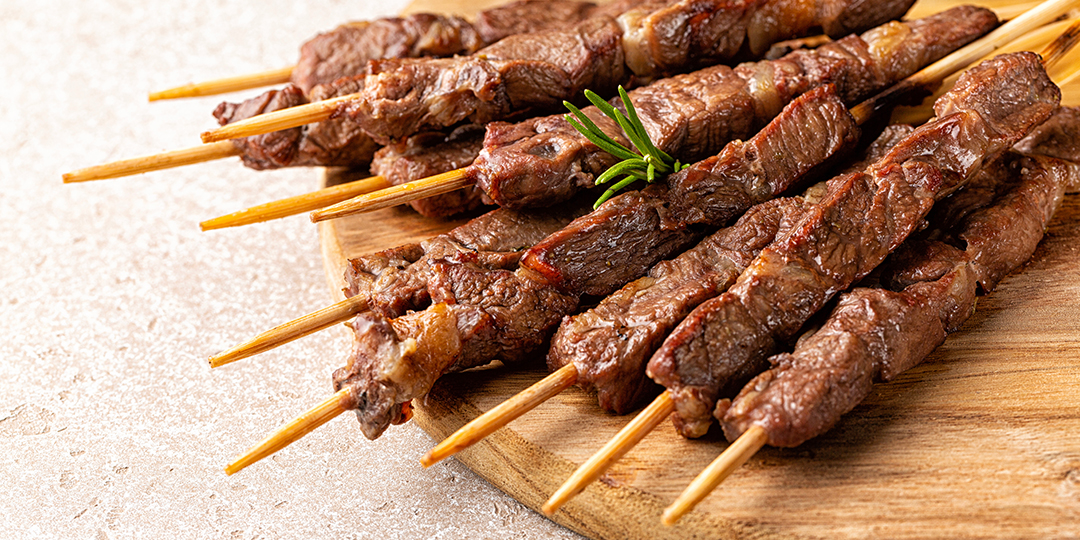Why You Should Consider Adding Lamb Meat to Your Diet: The Top 5 Reasons

When it comes to choosing protein sources for a healthy diet, lamb meat is often overlooked in favor of more popular options like chicken or beef. However, lamb, particularly grass-fed lamb from New Zealand Spring Lamb, offers a range of health benefits that make it a valuable addition to your diet. From providing essential nutrients to supporting lean muscle mass, eating lamb can be a delicious and nutritious way to diversify your meals. In this blog post, we’ll explore the benefits of lamb meat and the top reasons to include it in your diet, answer common questions like “Is lamb healthier than chicken?” and “How often should you eat lamb meat?” and provide tips on how to cook lamb meat to maximize its flavor and nutritional value.

Lamb Meat Nutrition
Lamb is a type of red meat that comes from young sheep rich in several key and beneficial nutrients, including protein, iron, zinc, and B vitamins, all of which play crucial roles in maintaining overall health. One of the standout features of lamb red meat’s nutritional benefits is its high-quality protein content, which is essential for building and maintaining lean muscle mass.
Grass-fed lamb also contains higher levels of omega-3 fatty acids, conjugated linoleic acid (CLA), and other healthy fats that support heart health. These beneficial fats help reduce inflammation in the body and contribute to overall cardiovascular well-being. Additionally, grass-fed lamb boasts a higher concentration of antioxidants compared to grain-fed meat, enhancing its nutritional profile.
While red meat from lamb contains more fat than leaner meats, particularly saturated fat, it’s important to consider the quality of fat. The fat in grass-fed lamb has a favorable ratio of omega-3 to omega-6 fatty acids, which can be beneficial in moderation.
In summary, lamb is a nutrient-rich protein source, offering healthy fat, essential vitamins, and antioxidants, making it a wholesome option for those seeking to improve their diet.
How Often Should You Eat Lamb Meat?
Deciding how often to include lamb meat in your diet depends on several factors, including your dietary goals, nutritional needs, and personal preferences. In general, lamb can be eaten as part of a balanced diet a few times a week. The key is moderation and variety.
For those who are looking to build muscle mass or require a higher protein intake, eating lamb 2-3 times per week encourages lean muscle mass and provides the necessary nutrients without exceeding recommended fat intake levels. Since lamb is rich in iron and B vitamins, incorporating it into your diet can also help prevent deficiencies, especially for those with increased nutritional needs, such as pregnant women or athletes.
It’s important to balance lamb consumption with other red meat or protein sources like chicken, fish, and plant-based proteins to ensure a varied diet. Consuming lamb in moderation while also incorporating other lean proteins will help you reap the health benefits of lamb without over-consuming saturated fats.

Top 5 Health Benefits of Eating Lamb
Rich Source of High-Quality Protein
Lamb meat is an excellent source of high-quality protein, which is vital for maintaining and repairing body tissues. Protein is particularly important for those who are active or trying to build muscle. Unlike some other red meats or protein sources, lamb provides a complete protein, meaning it contains all nine essential amino acids that the body cannot produce on its own. This makes it an excellent choice for those looking to support lean muscle mass and overall muscle health.
Packed with Essential Nutrients
One of the significant health benefits of lamb has an incredibly nutrient dense profile. Lamb is an excellent source of essential vitamins and minerals, such as iron, zinc, and B vitamins (especially B12). Iron is crucial for the production of red blood cells and helps prevent anemia, while zinc supports immune function and wound healing. B vitamins are vital for energy production and brain health. Including lamb in your diet can help ensure you’re consuming nutrient dense food.
Supports Heart Health with Healthy Fats
While lamb does contain fat, the type of fat it contains can actually be beneficial for heart health. Grass-fed lamb has higher levels of omega-3 fatty acids, which are known to reduce inflammation and reduce risk of a cardiovascular disease. disease. Additionally, the CLA found in grass-fed lamb has been shown to reduce body fat and improve lean muscle mass. By choosing grass-fed lamb meat, you can enjoy a delicious meal that also supports cardiovascular health.
Improves Iron Intake and Prevents Anemia
One of the standout health benefits of eating lamb is its high-iron content. Lamb is a particularly iron rich protein and source of heme iron, which is more easily absorbed by the body compared to non-heme iron found in plant-based foods. This makes lamb meat an excellent choice for individuals who are at risk of iron deficiency or anemia, such as women of childbearing age, and the elderly. Regular consumption of lamb can help maintain healthy iron levels, which is vital for energy levels and overall well-being.
Promotes Healthy Metabolism and Immune Function
Lamb is rich in zinc, an essential mineral that plays a critical role in immune function, DNA synthesis, and cell division. Adequate zinc intake is necessary for a healthy immune system and can help the body fight off infections more effectively. Additionally, the B vitamins found in lamb, such as B6 and B12, are essential for a healthy metabolism and energy production. Including lamb meat in your diet can support these vital functions, promoting optimal immune health and vitality.
Tips on How to Cook Lamb Meat
Cooking lamb meat can seem intimidating, but it’s quite simple once you understand the basics. Here are some tips to help you cook lamb meat perfectly every time:
Choose the Right Cut: Different cuts of lamb are suited to different cooking methods. For grilling or roasting, cuts like the leg, shoulder, lamb loin chops, or rack are ideal. For slow cooking or braising, opt for shanks or neck pieces.
Season Well: Lamb has a rich flavor that pairs well with bold herbs and spices. Fresh herbs like rosemary, thyme, and mint, along with garlic and lemon, complement the natural flavor of lamb meat beautifully. Don’t forget the extra virgin olive oil.
Cook to the Right Temperature: For the best flavor and texture, lamb should be cooked to an internal temperature of 145°F for medium-rare. Use a meat thermometer to ensure your lamb is cooked perfectly.
Rest Before Slicing: Letting lamb rest for about 10-15 minutes after cooking allows the juices to redistribute throughout the meat, resulting in a more tender and flavorful dish.
Incorporating lamb protein into your diet can provide a range of health benefits, from supporting muscle growth to improving iron intake and heart health. While both lamb and chicken have their place in a balanced diet, lamb offers unique nutritional advantages, especially when it comes to healthy fats and essential nutrients. By eating lamb in moderation and choosing grass-fed options, you can enjoy healthy food with a delicious flavor while reaping its health benefits. So, why not add some variety to your meals and start enjoying the many advantages of eating lamb today?
BONUS: Lamb Burger Recipe
For quick and delicious lamb burgers, start by mixing one pound of ground lamb with minced garlic, chopped fresh mint, salt, and pepper in a bowl. Form the ground lamb mixture into patties, about 1-inch thick. Heat a skillet or grill over medium-high heat and cook the patties for about 4-5 minutes on each side, or until they reach your desired doneness. Meanwhile, toast some burger buns and prepare your toppings—try tzatziki sauce, sliced cucumber, and fresh arugula for a refreshing twist. Assemble your cooked lamb patties burgers and enjoy a flavorful meal ready in under 30 minutes!

